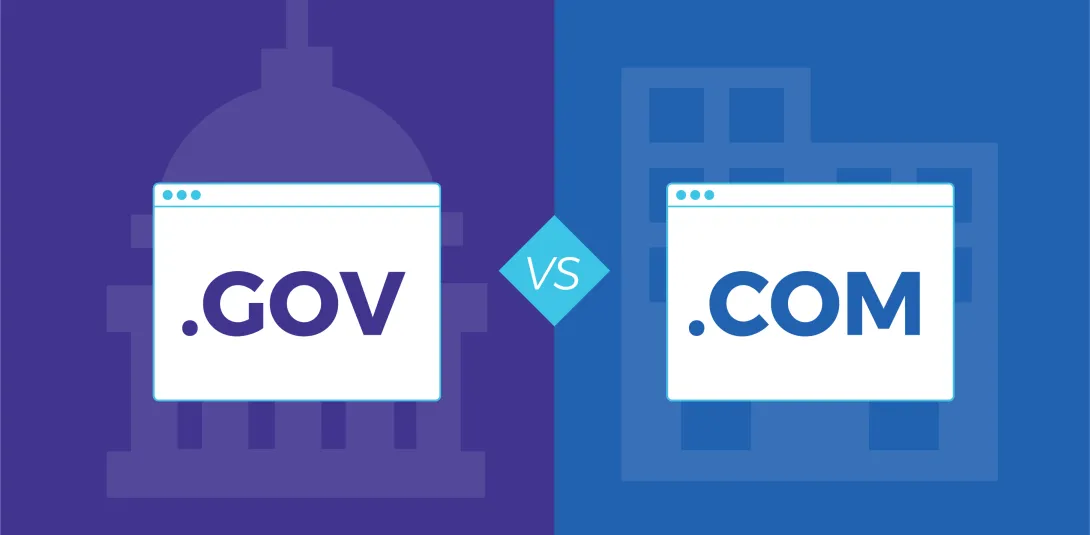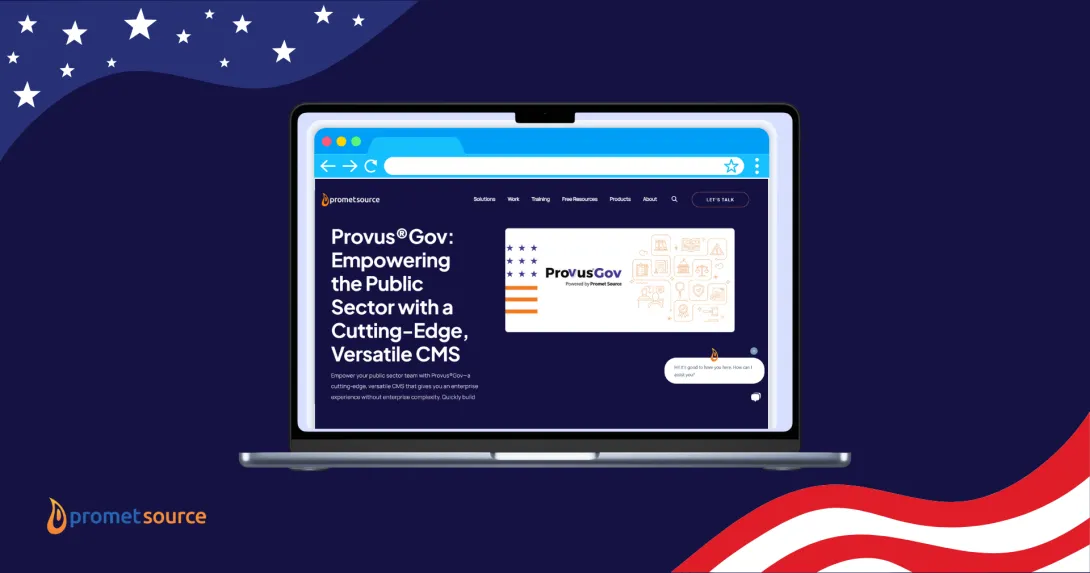Content Governance for Municipal Websites in Drupal

Takeaway: Governments should adopt policies to govern web content since various kinds of web content are essential for community engagement. We need to guarantee accurate information reaches constituents.
Drupal provides versatile content oversight tools, including permission settings and review processes. With Provus®, organizations can develop a governance model to meet their requirements.
Here we explore Drupal’s capabilities that empower governments to govern site content, like flexible role management and built-in workflows. We also touch on how Promet extends Drupal functionalities relevant to content approvals and oversight through solutions like Provus®.
With Drupal, you can create and manage a modern, engaging municipal website.
Key aspects of a content governance framework
Content governance is an organization's management of digital content assets and documents. It includes creating, reviewing, approving, distributing, storing, securing, and managing the content lifecycle. Effective governance requires a clear strategy, policies, procedures, and tools.
Clearly defined roles and responsibilities for managing website content
A content governance policy designates clear-cut roles and responsibilities for governing website content. What are the responsibilities your content managers, editors, subject matter experts, and leadership stakeholders play to ensure your content guidelines and standards are upheld?
For example:
- The content manager acts as the central oversight hub. They are accountable for establishing policies, enabling CMS tools and automation, delivering training programs, aligning content standards, and reviewing published content.
- The editors work with subject matter experts within city departments. They develop the departmental website content. They also verify accuracy and solicit ongoing guidance from their department.
- The subject matter experts impart crucial knowledge. They provide relevant evaluations and feedback on draft content brought forward by the editors. This bridges department insights with public information.
- High-level stakeholders, ranging from the Mayor to department heads, shape the overarching website strategy. They appoint capable editors and content managers responsible for managing each department’s web content.
Established review and approval workflows
Rigorous review and approval workflows requiring compliance before any content is published live to the website is an important aspect of a content governance framework. Here are some examples:
- All new or updated content must go through departmental review first via the tiered CMS permissions system. Writers submit to editors, and editors publish after approval.
- Once the editor publishes approved content, the content manager is notified to give their review. With this layered system combining departmental responsibilities and city oversight, subject expertise and standards alignment can be achieved.
- Delegating publishing capabilities based on the tiered writer, editor, and administrator roles allows for better content oversight. By withholding universal publishing permissions, government teams can maintain visibility over the information that reaches the public website.
Standards around content freshness and accuracy
Creating clear standards that ensure both content freshness and accuracy through multiple mechanisms ensures the public receives accurate information. This also maintains public trust for being proactive in keeping information fresh and factual. For example:
- Establishing regular content reviews by both subject matter experts and editors allows them to evaluate ongoing relevance and update details that may have changed over time.
- Setting notifications for content expiration dates provides proactive reliability. These notifications force re-evaluation to decide if time-sensitive data needs updates instead of assessing old information after the fact. This prevents outdated or incorrect content from lingering on the website.
Central oversight and support resources
Having a position that holds broad responsibilities spanning from policy setting to team training and standards alignment shows a commitment to centralizing governance oversight and resources. For example:
- To ensure content excellence, it's best to have one dedicated content manager with defined duties acting as a consolidated hub.
- This dedicated content manager has access to automation, notifications, and permissions management capabilities built into existing CMS. This access facilitates smooth governance execution.
- Proper governance requires investing in stewardship. The content manager has expansive duties, accessibility scope, and access to robust resources and support. This signifies the government’s commitment to human and technological investment.
Leadership stakeholder commitment
Adding high-level leadership stakeholders to the content governance policy ensures active governance participation. It also ensures ultimate accountability, public trust, and constituent engagement. Modern cities need executives to prioritize digital governance. For example:
- Rather than relegating website oversight solely to writers, adding leadership involvement in upholding content standards and selecting the qualified editors and managers themselves.
- This approach holds department heads accountable for performance and monitors how well they translate strategic goals to the public.
- The Mayor holds overall accountability for both website direction and actual published content. This highest-level ownership sets the tone across the organization that content excellence maintains an integral city priority.
How Drupal supports content governance
Drupal empowers content governance in numerous ways:
- Flexible role management
- Built-in workflows
- Search capabilities
- Calendar integration
- Alert integration
- Social media integration
- Reduced IT dependence
Flexible role management
The versatile role management allows configuring access levels. It offers graduated permissions for authors, editors, and administrators. We can dial in precise oversight scopes fitting organizational structures.
Here’s a sample blueprint we’ve worked on with a client:

Built-in workflows
Additionally, Workbench modules enable routing content through multi-stage reviews, approvals, and revisions before public release. We construct governance pipelines aligned to internal protocols.
Search capabilities
The built-in Apache Solr search functionality simplifies content discovery. It does this without external tools through custom indexes. Staff and stakeholders can pinpoint information on-site through user-friendly interfaces.
You can check Apache Solr capabilities in our case study with the South Florida Water Management District.
Calendar integration
Modules like the Fullcalendar View also readily support governance aims like events publishing and community participation. Embedding a calendar boosts involvement by displaying upcoming civic events since visitors can check upcoming civic events while administrators maintain oversight.
Alert integration
Alert integration represents another useful capability for broadcasting important public updates. Websites like Orange County have customized alerts reaching select or all departments as needed.

Social media integration
Some officials prefer having their social media feed show up on the website. Drupal can make that happen. Social media integration supports broader community engagement.
Reduced IT dependence
After the initial web development and design, Drupal's governance functionality reduces dependence on IT. It allows writers and editors across departments to self-manage changes following configured protocols. This empowers them to provide timely updates.
How Provus® streamlines content governance in Drupal
Provus® works within Drupal to simplify constructing content governance models. It accelerates building oversight workflows, permissions roles, and review processes. It also speeds up other tasks by combining common combinations into reusable use cases.
A content manager could, for example, apply a ready-made localized governance framework. The framework would have corresponding content stages. They could map user roles to those steps and automate routing through review. This replaces manually rebuilding those capabilities.
Additionally, Provus® centralizes settings for brand governance requirements, accessibility standards, and other specs. It propagates these settings across components. Here at Promet Source, we test all themes we build for accessibility. This maintains consistency of branding and accessibility at scale.
The capabilities of Provus® allow us to quickly build governance foundations on Drupal. This streamlines creation, editing, approval, and oversight at scale.
Content governance best practices
Andy Kucharski, our CEO, has great suggestions on the best practices for content governance in Drupal:
- Develop a content governance strategy
- Create a content style guide and template
- Collaborate with other users for content reviews
- Conduct accessibility and compliance reviews
- Take advantage of the audit trails
- Schedule publishing and archiving
Develop a content governance strategy
Andy notes that effective content governance starts with strategy and creating and identifying teams or roles within the organization.
He elaborates that different governance models allocate roles like content creators, reviewers, and publishers/editors in various configurations from decentralized to centralized.
You may have essentially a top-down approach where you have editors who only have publishing rights and then content creators who push those for review and don't have the ability to publish. Then there are team approaches for an organization that is maybe heavily regulated or an organization that requires a number of steps before content is published.
So a key initial best practice per Andy is strategizing around the teams and roles needed to match the organization's governance requirements. This shapes the subsequent Drupal workflow aligned to that content strategy.
Create a content style guide and template
A content style guide is a document that outlines the writing style, tone, and voice. It should be used when creating content. It should also include guidelines for formatting, punctuation, and grammar. This ensures that all content on your website is consistent and on-brand.
We also suggest creating content templates, made easier by Provus®. Content templates are pre-designed layouts. Building them ensures consistent content across your website. This guarantees that all content on your website follows a consistent format and includes all necessary elements.
Collaborate with other users for content reviews
Andy emphasizes leveraging Drupal's built-in tools to facilitate content review and collaboration between identified roles. Specifically, he called out the Workbench module as a key means to administer review workflows:
The Workbench module came into existence out of the need for the community and they've been widely adopted, even in Drupal 7, because of the external need.
He recommends constructs like the Workbench module to assign content to users based on their role. The constructs also maintain audit records through each step of assessment or modification and ensure final approval before publication.
Conduct accessibility and compliance reviews
As strong advocates for accessibility, we recommend conducting accessibility checks on content. Following accessibility guidelines guarantees that your constituents can access the information and services they need with as minimal barriers as possible.
UNSURE HOW TO CONDUCT AN ACCESSIBILITY CHECK? CONSULT WITH OUR EXPERTS!
The great thing about having workflows and the ability to assign roles as well is that compliance reviews can be assigned to the right people. For example, if you are publishing a statement, you can assign the content to your legal team for review.
Take advantage of the audit trails
Andy recommends taking advantage of Drupal's built-in tracking functionality to:
- Track content status across various stages like draft, under review, approved, published, etc.
- Maintain a revision history of all changes applied to content over time.
- Log all approvals/reviews along with the user, timing, and approval outcome at each step.
Drupal is very good because it provides functionality for audit trails, provides for managing that workflow, and those different roles have the ability to see the content that's assigned to them and what the tasks for that specific piece of content are.
Robust audit trails give organizations visibility into the lifecycle of content before public publishing. Andy advises configuring workflows in Drupal to capitalize on recording this key data to support content governance aims.
Schedule publishing and archiving
As mentioned earlier, Drupal allows for publication scheduling which is necessary to keep the site updated and the information secure.
Sometimes there's also cases where we need to keep content private before certain dates because the content has big implications. For example, when you have a piece of content you’ve been working on for months that has a major impact on the economy. Well, that number could be within expectations of the markets or not, and that swings the markets. And if somebody had that information prior to its release, they stand to gain millions if not billions of dollars.
It’s also important that reviewing and archiving content should be part of the protocol. This allows administrators to set specific future dates and times for content changes and updates to go live without burdening the team.
You can also sunset the content so it's no longer there. Of course, once you release it to the internet, it's never really gone.
While indicating content truly never disappears from the internet, Andy recommends always having a sunset or archive plan to intentionally unpublish/delete outdated content.
These functionality uses enable governance over the entire content lifecycle—not just creation and updates.
Transform your municipal website into a hub of local information and engagement
Implementing a content governance policy transforms city and county websites into dynamic hubs. It keeps communities informed and engaged.
With Drupal, you can manage large municipal platforms. It has features like permission controls, built-in workflows, and role-based access. Combining these features with solutions like Provus® helps speed up configuration, content creation, and management.
Don't settle for outdated content management systems. Connect with our team today to create a dynamic and engaging website that connects with your audience.
Get our newsletter
Get weekly Drupal and AI technology advancement news, pro tips, ideas, insights, and more.






